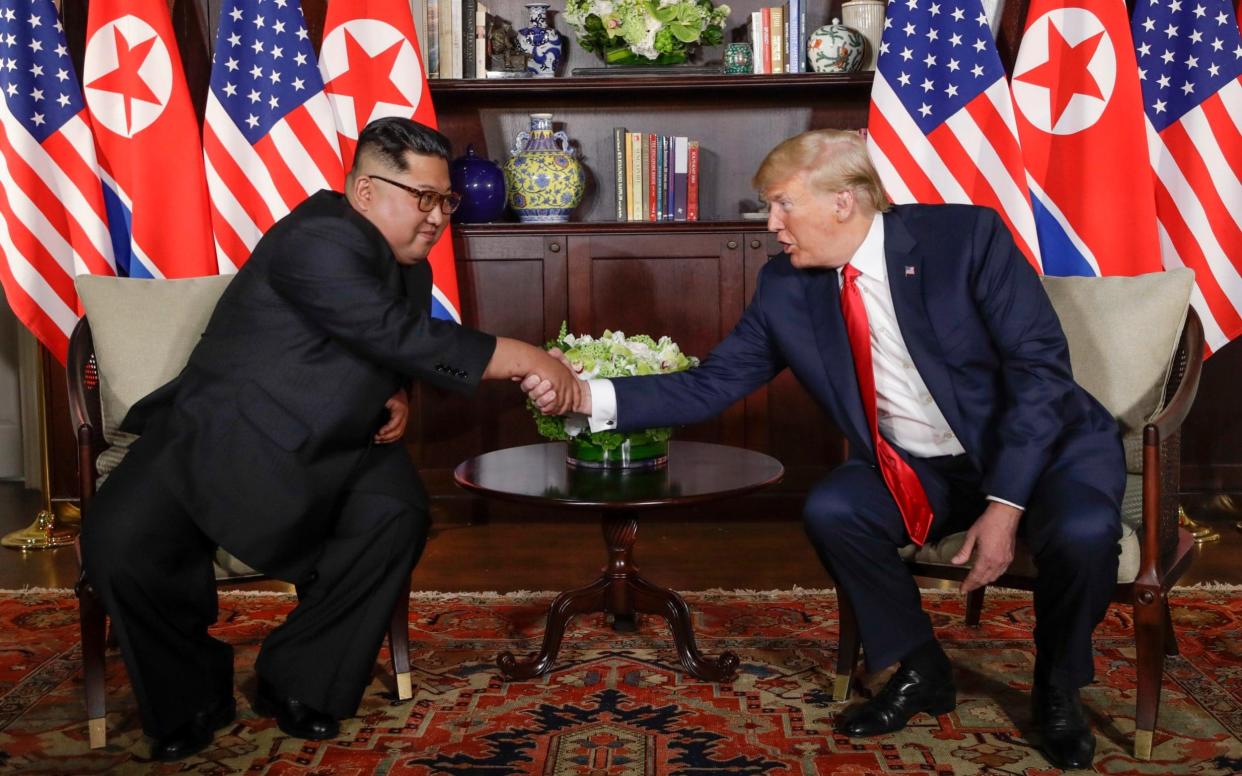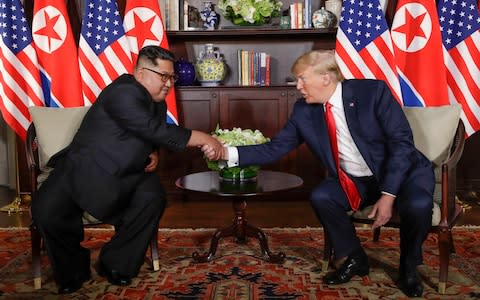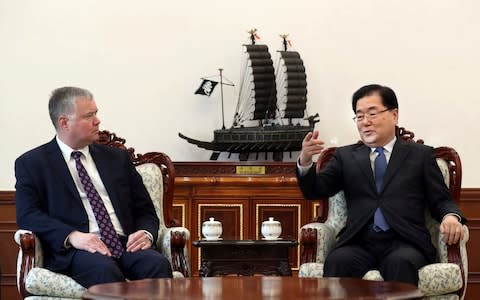Trump Kim summit: What has changed since the pomp and ceremony of Singapore?

President Donald Trump and Kim Jong-un, the North Korean leader, are meeting for their second face-to-face talks this week in Vietnam.
It follows their historic summit in Singapore last June, during which they agreed to work towards the "complete denuclearisation" of the Korean peninsula.
However since that meeting - the first between a US president and a North Korean leader - the two sides have expressed different views on what the phrase actually means and talks have stalled.
What happened in Singapore?
As Mr Trump told it, "we fell in love". The president and Kim were seen laughing over lunch before unveiling a four-point plan.
The agreement, no more than a sentence per bullet point, offered only vague ambitions without a fixed timetable to achieve it.
It also did not specify in which order the points would be tackled. North Korea has chosen to focus on the first two, establishing new relations and a lasting peace regime, while the US has honed in on the third - the pledge to work towards complete denuclearisation.

In the eight months that have passed since the meeting there have indeed been some signs of progress on the Korean peninsula. Some remains of American soldiers have been repatriated and America has decreased its joint military drills with South Korea.
Mr Trump later said the issue of denuclearisation was "largely solved".
In his New Year address last month, Kim even pledged not to test any more nuclear missiles - but if the country has already adequately built up its arsenal this is merely a token gesture.
But despite the optics of the Singapore meeting, North Korea has made no substantive steps to dismantle its nuclear weapons and appears unwilling to do so until America reduces its military presence in South Korea.
What will be discussed in Vietnam?
The stakes for this meeting are higher than in 2018, when a handshake between the two leaders was a remarkable achievement in itself. The two leaders are now under pressure to agree on the definitions for denuclearisation and "peace" on the Korean peninsula.
To America, the term means the "complete, verifiable and irreversible" dismantling of the country's weapons programme. To North Korea, it includes the withdrawal of American military threats from the region.
The US has insisted that Kim get rid of his weapons before it lifts tough economic sanctions on the rogue state. Kim has said he wants each action he takes to be matched by the US - in other words, dismantling his nuclear programme step-by-step in exchange for concessions.
America's special representative for North Korea, Stephen Biegun, has also said the country must provide a complete list of its nuclear assets before a deal can be reached.

Both leaders want to use the meeting to boost their personal images. Mr Trump, the self-proclaimed king of deals, will be hoping to secure some sort of agreement from Kim - a clear win to sell to supporters back home as something that his predecessors all failed to achieve. Kim wants his people to see him meeting with the US president on an even footing.
Kim wants a formal end to the Korean War, which would give him grounds to argue UN forces should be removed from the border with the South. The US has been reluctant to declare an end to the war yet, because it would restrict its leverage against North Korea. But Mr Trump has made clear his frustration with what he terms "subsidising" other countries' militaries and he is eager to show his base he is making progress on his talks with North Korea.
The decision to host the meeting in Hanoi, Vietnam is significant. Mr Trump and his aides have previously held up the country as an example of a communist country that overcame international isolation to become one of the fastest growing economies in the region. The message is clear: if Kim gives up his nuclear missiles, North Korea's crippled economy can boom.
The rhetoric from both sides ahead of the summit gives reasons for optimism. Kim has complimented Mr Trump's "positive way of thinking", while the US president has tweeted "[Kim] may surprise some but he won’t surprise me, because I have gotten to know him & fully understand how capable he is".
Who are the negotiators aiding Trump and Kim?
North Korea's delegation is likely to include the country's most experienced negotiators who have skillfully navigated demands by successive US administrations to give up their nuclear arsenal. They include Pyongyang's chief negotiator, the former spy chief Kim Yong-chol, who finalised agreements for the Vietnam meeting and Ri Yong-ho, the foreign minister and veteran diplomat.
The US cohort may lack the same levels of experience. According to reports, many of the State Department's most experienced aides on North Korea have retired in recent months. However Mike Pompeo, the Secretary of State and Mr Trump's intermediary with Pyongyang, will likely attend. John Bolton, Mr Trump's hawkish national security adviser and Mr Biegun, the former Ford Motor executive now acting as the US special representative for North Korea are both also expected to attend.
Ultimately, it will be the tete-a-tete between the two leaders which will determine the success of the summit.

